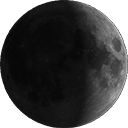VLBA observations of a rare multiple quasar imaging event caused by refraction in the interstellar medium
Author(s): Pushkarev, A. B.; Kovalev, Y. Y.; Lister, M. L.; et al.
Source: ASTRONOMY & ASTROPHYSICS Volume: 555 Article Number: A80 DOI: 10.1051/0004-6361/201321484 Published: JUL 2013
Aims. We have investigated highly atypical morphological parsec-scale changes in the flat spectrum extragalactic radio source 2023+335 which are coincident with an extreme scattering event (ESE) seen at radio wavelengths during the first half of 2009.
Methods. We used (i) 15.4 GHz Very Long Baseline Array (VLBA) observations of the quasar 2023+335 obtained at 14 epochs between July 2008 and Nov. 2012 as part of the Monitoring Of Jets in Active galactic nuclei with VLBA Experiments (MOJAVE) program; (ii) earlier archival VLBA observations of the source performed at 1.4, 2, 8, 15, 22, and 86 GHz to analyze the properties of the proposed turbulent screen toward 2023 + 335; and (iii) data sets from the Owens Valley Radio Observatory (OVRO) and University of Michigan Radio Astronomy Observatory (UMRAO) single-dish monitoring programs performed at 15 and 14.5 GHz, respectively, to study integrated flux density changes.
Results. We report on the first detection of the theoretically-predicted rare phenomenon of multiple parsec-scale imaging of an active galactic nucleus induced by refractive effects due to localized foreground electron density enhancements, e. g., in an AU-scale plasma lens(es) in the ionized component of the Galactic interstellar medium. We detected multiple imaging in the low galactic latitude (b = -2 degrees.4) quasar 2023+335 from the 15.4 GHz MOJAVE observations when the source was undergoing an ESE. While the parsec-scale jet of the source normally extends along PA similar to -20 degrees, in the 28 May 2009 and 23 July 2009 images a highly significant multi-component pattern of secondary images is stretched out nearly along the constant galactic latitude line with a local PA approximate to 40 degrees, indicating that the direction of relative motion of the plasma lens is close to orbital. Weaker but still detectable imaging patterns at similar position angles are sporadically manifest at several other epochs. Modeling the ESE that occurred in early 2009 and lasted similar to 0.14 yr, we determined that the foreground screen has a double-lens structure, with proper motion (similar to 6.8 mas yr(-1)), and angular size (similar to 0.27 mas). We also found that the angular separation between the two brightest sub-images roughly follows a wavelength-squared dependence expected from plasma scattering. Furthermore, by analyzing archival non-simultaneous VLBA observations covering a wide frequency range from 1.4 to 86 GHz, we found that the scattered angular size of the VLBI core follows a gamma(-1.89) dependence, implying the presence of a turbulent, refractive dominated scattering screen that has a confined structure or is truncated transverse to the line of sight toward 2023+335.






